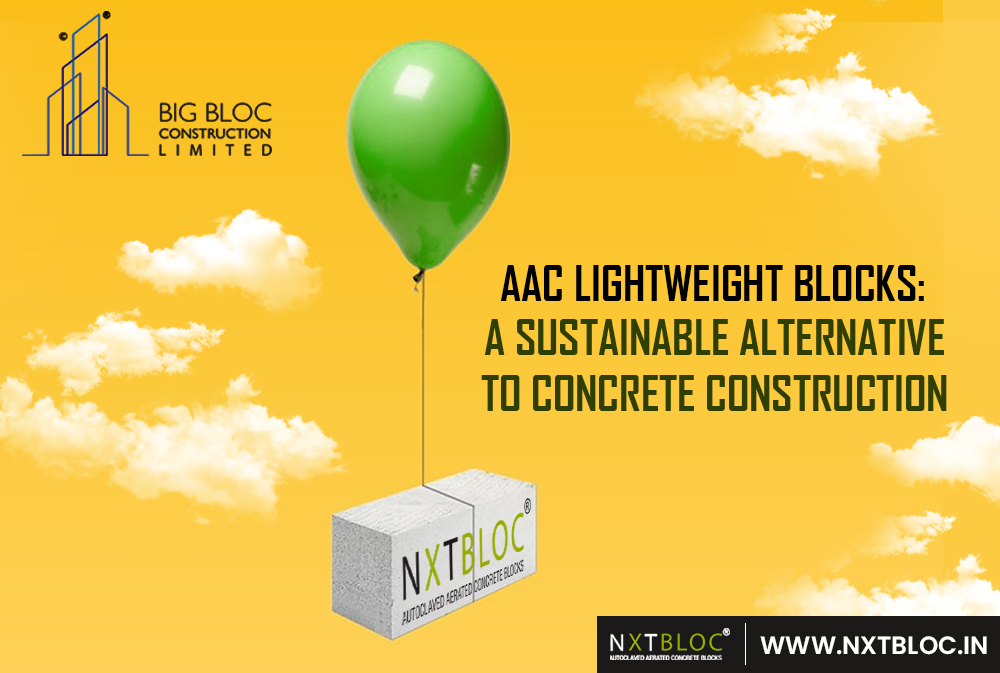The construction industry consumes massive amounts of resources, both in terms of energy use and nonrenewable materials. The industry relies primarily on concrete, a material that is not only energy-intensive to produce, but is also made with highly-energetic petrochemicals and is often exacerbated by a lack of quality control in the production cycle.
Concrete construction can be a costly and laborious process. It also has drawbacks in terms of sustainability and building flexibility. That is why AAC lightweight block is making some waves in the construction industry. It’s time you knew about it too!
AAC stands for “autoclaved aerated concrete.“ It’s made from sand, lime, water, and cement—which is then cured with steam under pressure. The result is a lightweight, eco-friendly building material that offers insulation and fire resistance.
Here are just some of the advantages of lightweight AAC blocks:
- AAC lightweight blocks are a sustainable alternative to traditional concrete construction due to their low thermal conductivity and ability to be recycled.
- They are made of natural products and manufactured using energy-efficient technology, so they have a lower carbon footprint than other common materials.
- The material’s energy efficiency also makes it cost-effective for builders, especially over the long term: AAC blocks require less maintenance and can last for many years.
- AAC’s naturally-insulating properties make it great for passive heating and cooling systems that don’t use electricity or fossil fuels.
- the material has a high thermal mass, it absorbs heat during the day then releases it at night when temperatures drop outside.
- This type of building material provides a number of benefits that make it an excellent choice for many applications.
- This lightweight concrete block is made from aerated concrete. It has a lower density than regular concrete and is ideal for use in areas where weight is an issue—such as earthquake-prone zones or high above ground level.
- This type of construction material also helps reduce energy usage. It is primarily used on the exterior of buildings but can be used in interior walls as well.
What makes AAC lightweight blocks so environmentally friendly?
AAC lightweight blocks are made from a mixture of cement, lime, sand, aluminium powder, and water. They are easy to stack and can be placed between wood or steel frames without requiring additional support.
The manufacturing process for AAC blocks is also far more sustainable than that of traditional concrete blocks. It requires less energy, water, and land space, and produces fewer greenhouse gas emissions than any other type of concrete product. The blocks themselves are also lighter than traditional concrete blocks—weighing only 1/6th as much—which means they need less energy to transport them from their factory site to wherever they will be installed.
With the growing appetite for more efficient building materials, the demand for AAC lightweight blocks will continue to increase over time—and it’s not hard to see why!
Conclusion
Reduce your building costs and make your building more energy-efficient with AAC Lightweight Concrete Block from NXTBloc – A leading AAC blocks manufacturer, supplier and exporter in India.
At NXTBloc, we believe that the building material you choose for your next project should meet all of your construction needs. That’s why we manufacture a concrete block that is both lightweight and strong. Our blocks are much lighter than traditional concrete blocks, making them easier to transport and install while still providing the same durability and strength as other concrete blocks on the market.
We take pride in our commitment to reducing waste by producing reusable building products that reduce both the weight of your structure and its carbon footprint on the planet.
